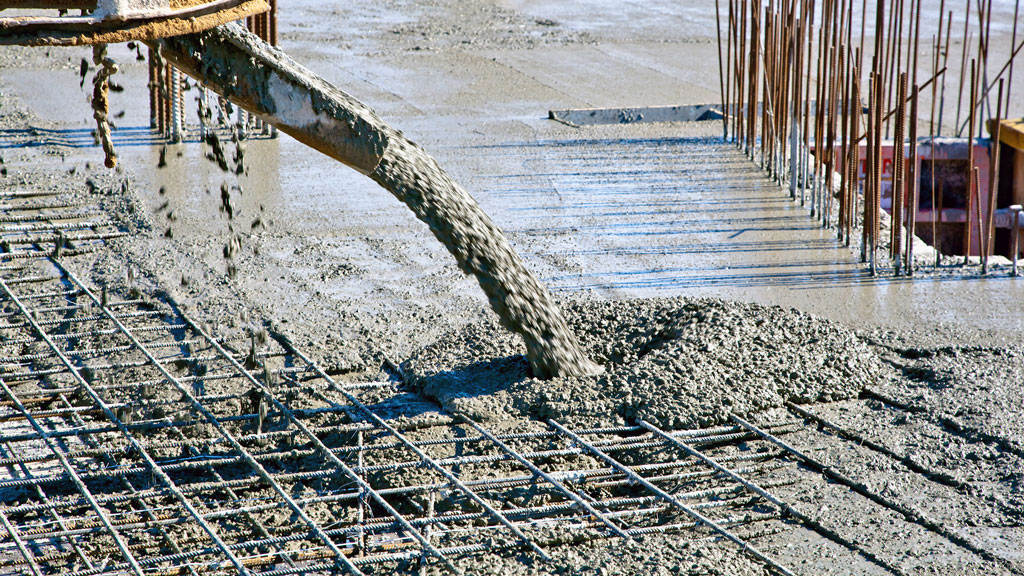The cement and concrete sector has made tremendous strides in reducing its carbon impact over the past 20 years but as Cement Association of Canada (CAC) executive Adam Auer told a panel of green building advocates recently, many challenges lie ahead.
Auer, the association’s vice-president of environment and sustainability, told an audience assembled for the Canada Green Building Council’s Embodied Carbon, Concrete Solutions webinar that new federal Greening Government directives are imposing new sustainability targets on a sector that has already been hard-focused on its own self-imposed goals.
The cement industry welcomes the test, Auer stated.
“One of the reasons why I’m very excited that government is finally looking at low-carbon building materials…is because I think that the stringency that’s required to do anything innovative on the government procurement side is going to really drive improvements in some of the ongoing challenges that we face,” he said.
Buy Clean has finally been recognized as a major climate-change policy tool, Auer said, and Canada is typical of most nations with governments representing about 32 per cent of building material purchasers, meaning their procurement policies are highly influential.
The federal government’s A Healthy Environment and A Healthy Economy Plan launched last December targets heavy industry and has direct references to the impacts of cement on greenhouse gases (GHGs).
The federal Greening Government directive requires the use of Portland-limestone cement (PLC) by 2022, the adoption of environmental product declarations (EPDs) the same year and a 30-per-cent reduction in embodied GHGs by 2025. Introduced in Canada 10 years ago, PLC could reduce GHGs by 30 per cent compared with traditional cement.
“We’ve been advocating to government for the better part of the decade that procurement is a real linchpin to introducing low-carbon cement and concrete technologies to the marketplace,” Auer said, noting the Joe Biden government is also pushing forward on Buy Clean.
It’s not hard to see why cement and concrete are at the forefront of carbon-reduction efforts, Auer said. Carbon-intensive concrete is the most consumed building material on the planet after water.
Across the country there are 15 cement plants, over 1,000 ready-mix concrete plants and 80 specialty concrete product producers. Over the next five years, Canada will consume at least 55 million tonnes of cement (which is the active ingredient in concrete, binding sand, aggregates and water) to produce about 400 million tonnes of concrete.
Cement represents from seven to 15 per cent of concrete but because of the intense heat required in its creation, it is responsible for up to 80 per cent of concrete’s carbon footprint.
The cement/concrete sector’s roadmap for decarbonization can be dated back to 2000, Auer explained. Energy use for cement manufacturing has been reduced by 20 per cent and greenhouse gas intensity has been reduced by 15 per cent in the last two decades.
The advent of PLC was a major accomplishment and other new goals to be pursued in the coming decade are the introduction of low-carbon fuels during production that could reduce GHGs by 20 to 30 per cent and new concrete-curing technologies that could reduce carbon intensity by 70 per cent if they become mainstream.
Carbon capture would be another major step to bring cement manufacturing emissions almost to zero and combining carbon-neutral cement with such technologies as biomass fuels or carbonated aggregates could turn concrete in a carbon-negative material.
Then cultural tools such as disclosure promises and EPDs would embed the zero-carbon target throughout the industry, Auer said.
“The main point here is that when it comes to the embodied disclosure conversation that we’re leading into, some of these levers that we’re working on are already well described, and things like EPDs are going to require new accounting methodologies and standards and that’s also a part of our overall decarbonization strategy,” he explained.
Next, collaboration with architects, engineers and builders is required to achieve the strategy’s potential, Auer said, a point that was reiterated during the panel discussion.
“We’re also in a really great position to optimize design,” noted Jolene McLaughlin, project manager, sustainable building services at EllisDon. “EllisDon specifically has a very deep technical team that’s very informed on building materials and concrete happens to be one of our specialties, so we can work with our suppliers as well as the structural engineers and the owners to set targets together.”
Follow the author on Twitter @DonWall_DCN.











Recent Comments